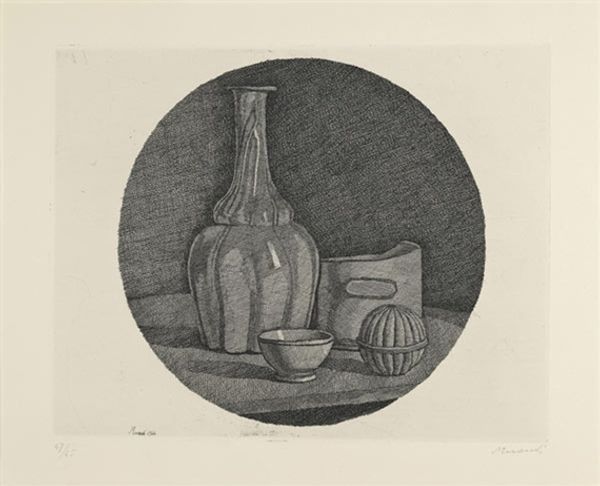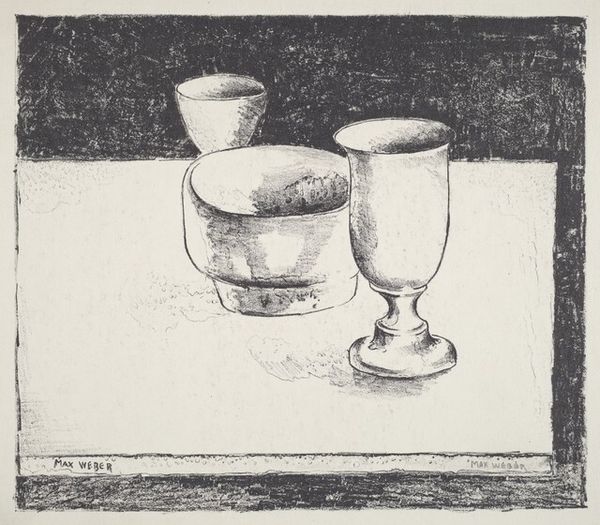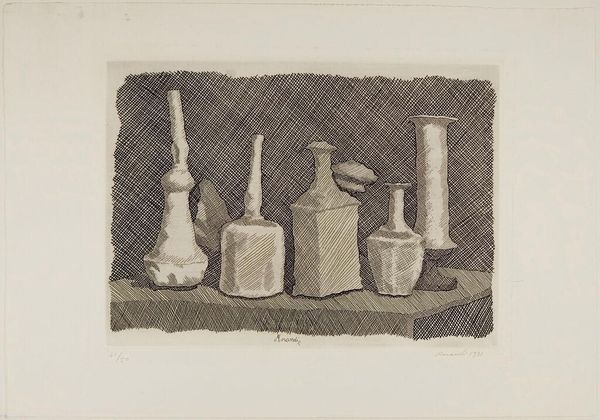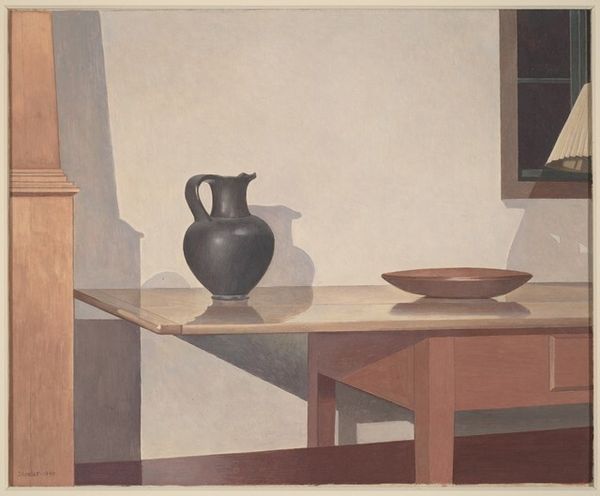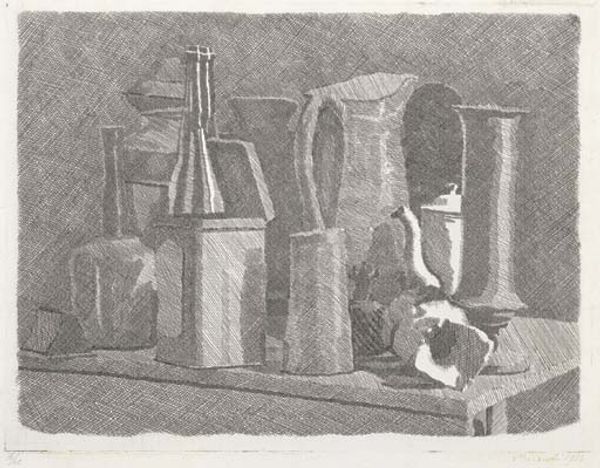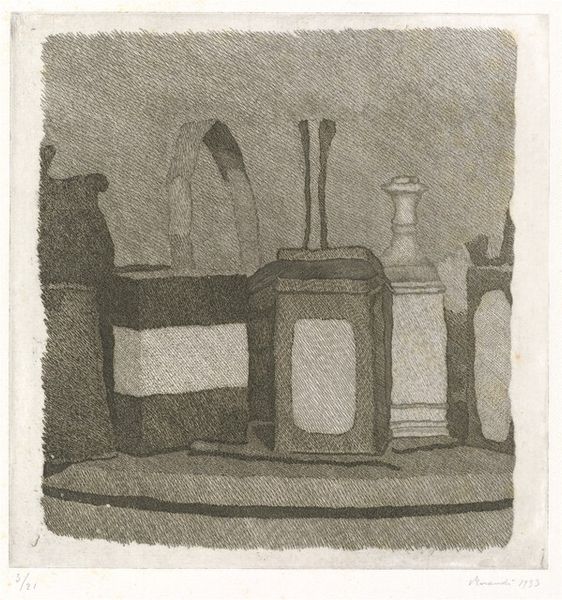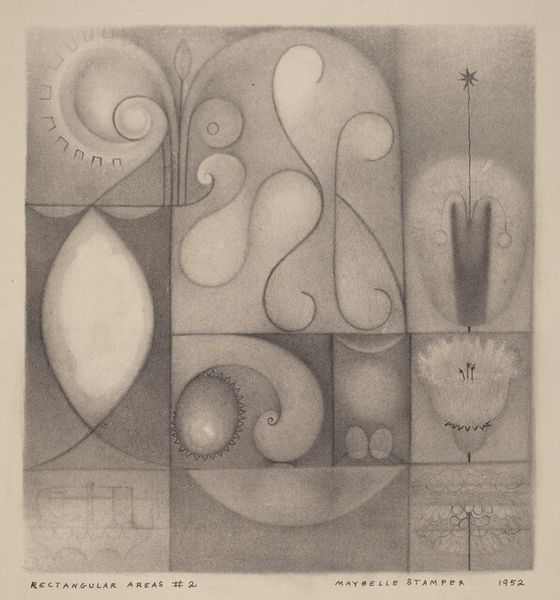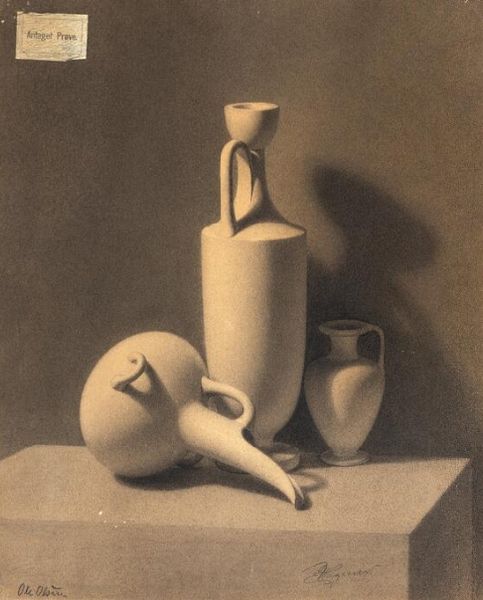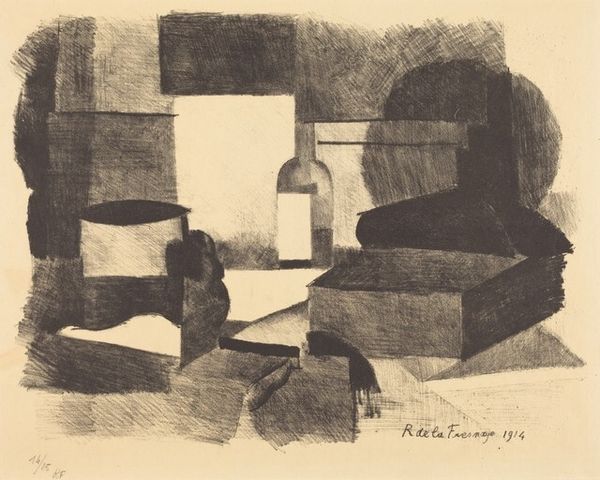
print, etching
# print
#
etching
#
geometric
#
line
Copyright: National Gallery of Art: CC0 1.0
Editor: This is "Still Life," an etching by Gérard de Palézieux from 1961. The image is dominated by these sharply-etched lines and crosshatching. It gives it a somewhat rigid feel despite the still life subject matter. What do you make of it? Curator: I see an intense engagement with the materiality of printmaking itself. Look closely. It’s an etching, right? So Palézieux is directly engaging with the copper plate, the acid, the physical labor involved in creating this image. The composition directs us to consider the relationship between production and aesthetics, what is valued as art versus mere craft? Editor: So you're saying that the *making* of the artwork is really the main focus? Curator: Absolutely. The traditional still life is upended here. The objects depicted – vases, fruit – are secondary. It's about interrogating the social context that elevates a painting over, say, well-made pottery. What defines ‘fine art’ here, when labor and material constraints clearly show a maker’s process that shares just as much with artisanal crafting and labor? Editor: That’s a perspective I hadn't considered before. I was stuck on the fact that it's a traditional still life scene. I hadn't made the link between the material constraints, process, and labour of it. Curator: Right, and by extension we should think of how prints become circulated. Etchings allow for multiple reproductions. It gets outside the confines of unique art objects for consumption into circulation for more general public, doesn’t it? Editor: Definitely changes my understanding of "still life" as a genre! Thanks for that different interpretation. Curator: Likewise! The work makes you consider the processes and materials inherent in artistic practice in society.
Comments
No comments
Be the first to comment and join the conversation on the ultimate creative platform.


